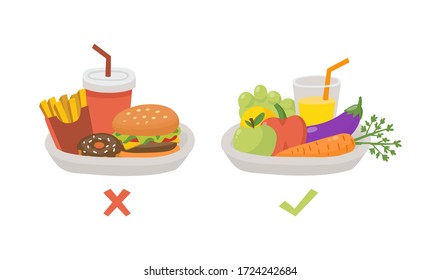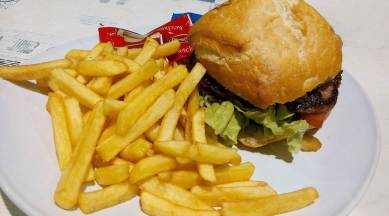
While there are some healthy foods you should avoid if you have GERD, it doesn't mean that you have to stop eating your favorite foods. Modifying your diet will often be enough to reduce the risk of developing GERD. Your diet should be modified to include non-citrus fruits. You can also eat less high-fat vegetables.
Fresh herbs are a great way to add flavor and color to your meals. You should make sure they're not too acidic. Onions are a great way of adding flavor to your esophagus without causing irritation. To achieve the same effect, you could also try green or white shallots. You should always start with a small amount of onion and work your way up.
Tomatoes and tomato sauce are among the most common food items to avoid with GERD. Tomatoes are rich in lycopene. This powerful antioxidant fights cancer. This acidity can cause irritation to already inflamed tissues in the esophagus. They should be avoided as much as possible. Watermelon is another food that contains lycopene.

If you can avoid eating pizza every day, you should be able to eat it at least once a week. Combining spicy and fatty food can worsen GERD symptoms. Fried and fatty foods are also to be avoided. Avoid chocolate, coffee, and all forms of alcohol. Caffeine can irritate the stomach and cause acid reflux. Those with GERD need to limit their consumption of caffeine drinks.
Avoid spicy foods on a regular basis. Although onions are a healthy staple, they can cause heartburn. Onion stimulates the production of acid and bile. Cooking onions can help put out the flames. Adding onion to your list of foods to avoid with GERD can help you manage the condition. So, while these are not the only foods to avoid with GERD, they are still important to know.
These foods are generally best avoided. However, certain foods may make your symptoms worse. If you have GERD symptoms, spicy foods should be avoided. These foods can cause acid reflux by affecting the lower esophageal Sphincter. Chocolates containing caffeine and cocoa should be avoided. All of these substances can be acidic and should not be consumed with GERD.
It is crucial to understand which foods can trigger GERD. Some foods may aggravate symptoms, while others can cause severe discomfort. Some foods to avoid with GERD include citrus fruits, citrus juice, and alcohol. These foods should be consumed in moderation to ensure your health. You should restrict the consumption of these foods in your diet. If you don't know which foods you should avoid due to GERD, consult your doctor.

If you have GERD, avoid spicy foods and alcohol. GERD can also be caused by foods that contain spicy or alcoholic ingredients. You should limit your intake of these foods. Also, remember that caffeine as well as alcoholic beverages can be acidic. You can avoid certain foods if you suspect that your GERD symptoms could be related to a specific food.
Citrus fruits are another food that should be avoided if you have GERD. Citric acid is high in grapefruits and oranges, and can cause GERD symptoms to worsen. Limiting your consumption of citrus fruits is important. It is not necessary to cut out all citrus but it is important to keep your consumption to a minimum. Instead, try to enjoy the fruit and drink as frequently as possible. You can limit the amount of citrus fruit you consume if necessary.
Avoid dairy products if GERD symptoms are present. People with GERD may find dairy products soothing, but this can aggravate their condition. These should be avoided along with caffeine, alcoholic beverages, and caffeine. Your diet could also be a factor in your GERD symptoms. Talk to your doctor to find out about any food allergies. If you have GERD symptoms, you can make a better choice.
FAQ
Why do we need to have a healthy lifestyle?
A healthy lifestyle will help us live longer and happier lives. Regular exercise, healthy eating habits, healthy sleep habits and stress management can all help prevent strokes, heart disease, diabetes, and cancer.
A healthy lifestyle can also help improve mental health and make it easier to deal with daily stressors. A healthy lifestyle will help us feel more confident and younger.
What does it take to make an antibiotic work?
Antibiotics are drugs that destroy harmful bacteria. To treat bacterial infections, antibiotics are used. There are many options for antibiotics. Some are taken orally, some are injected, and others are applied topically.
People who have been infected with certain germs may need antibiotics. One example is if someone has had chickenpox and wants to prevent shingles. For those with strep-thorphritis, an injection of penicillin could be administered to prevent them from getting pneumonia.
When antibiotics are given to children, they should be given by a doctor. Children are more likely to experience side effects than adults from antibiotics.
The most common side effect of antibiotics is diarrhea. Other possible side effects include stomach cramps, nausea, vomiting, allergic reactions, headaches, dizziness, and rashes. These symptoms generally disappear once the treatment has finished.
Exercise: Good or Bad for Immunity?
Exercise is good to your immune system. Your body makes white blood cells that fight infections when you exercise. Your body also removes toxins. Exercise can prevent diseases such as cancer and heart disease. It can also lower stress levels.
But, too much exercise can lead to a weakening of your immune system. When you exercise too hard, your muscles will become sore. This causes inflammation, swelling, and can even lead to death. In order to fight infection, your body must produce more antibodies. These extra antibodies can lead to allergies or autoimmune disorders.
So, don't overdo it!
What is the problem with BMI?
BMI stands for Body Mass Index, which is a measurement of body fat based on height and weight. The following formula can be used to calculate BMI.
Divide the weight in kilograms by the height in meters squared.
The score is expressed as a number between 0 and 25. Scores of 18.5 and higher indicate overweight, while scores of 23 and higher indicate obesity.
A person who is 100 kg in weight and 1.75m in height will have a 22 BMI.
Do I have to count calories?
You might wonder, "What's the best diet for me?" or "is counting calories necessary?" The answer is dependent on several factors like your current health status, personal goals, your lifestyle, and your preferences.
The Best Diet - Which One Is Right To You?
My current health status, personal goals, preferences, and overall lifestyle all play a role in choosing the right diet. There are many good and bad diets. Some work well for certain people while others don't. What can I do to make the right choice? How do I make the right decision?
These are the questions that this article attempts to answer. It starts with a brief introduction of the different types of diets available today. Next, we'll discuss the pros and cons for each type of diet. The final step is to determine which one is right for you.
Let's begin by briefly reviewing the different types and diets.
Diet Types
There are three main types. Low fat, high proteins, and ketogenic. Let's look at each one briefly.
Low Fat Diets
A low-fat diet restricts fat intake. This is achieved through reducing intakes of saturated fats (butter and cream cheese, for example). These fats can be replaced with unsaturated fats like avocados and olive oil. People who are looking to lose weight quickly and easily will benefit from a low-fat diet. This diet can cause constipation, heartburn, and stomach problems. In addition, it may lead to vitamin deficiencies if a person doesn't get enough vitamins from their food.
High Protein Diets
High protein diets restrict carbohydrates in favor of proteins. These diets often have higher levels of protein than most other diets. They are meant to help build muscle mass and burn more calories. Unfortunately, they can't provide adequate nutrition for those who eat regularly. They are also very restrictive, so they might not be appropriate for everyone.
Ketogenic Diets
Ketogenic diets can also be known as keto diets. They are high in fat and moderate in protein and carbs. They are typically used by athletes and bodybuilders because they allow them to train harder and longer without getting tired. They do require strict compliance to avoid any side effects like fatigue, headaches, nausea, and headaches.
How often should you exercise?
Fitness is key to a healthy lifestyle. There is no time limit on how much you should exercise. Find something you like and stay with it.
You should aim to do 20-30 minutes of moderate intensity exercise three times per week. Moderate intensity will mean that you'll continue to be exerting yourself afterward. This type is good for burning around 300 calories.
If you prefer to walk, go for 10 minute walks four days a week. Walking is low impact and easy on your joints.
Jogging is an alternative to running. You can do it for as little as 15 minutes each day. Running is a great way of burning calories and building muscle tone.
You should start slowly if it's your first time exercising. Begin by only doing 5 minutes of cardio five times per week. Gradually increase the amount of cardio you do until you reach your goal.
Statistics
- According to the Physical Activity Guidelines for Americans, we should strive for at least 150 minutes of moderate intensity activity each week (54Trusted Source Smoking, harmful use of drugs, and alcohol abuse can all seriously negatively affect your health. (healthline.com)
- This article received 11 testimonials and 86% of readers who voted found it helpful, earning it our reader-approved status. (wikihow.com)
- nutrients.[17]X Research sourceWhole grains to try include: 100% whole wheat pasta and bread, brown rice, whole grain oats, farro, millet, quinoa, and barley. (wikihow.com)
- The Dietary Guidelines for Americans recommend keeping added sugar intake below 10% of your daily calorie intake, while the World Health Organization recommends slashing added sugars to 5% or less of your daily calories for optimal health (59Trusted (healthline.com)
External Links
How To
How to Live a Healthy Lifestyle
A healthy lifestyle is one in which you are able maintain your weight and health. Healthy living means eating right, exercising regularly, getting enough rest, and staying away from harmful substances like alcohol, tobacco, cocaine, and drugs. A healthy lifestyle helps you stay fit and feel good about yourself. In addition, a healthy lifestyle reduces your risk of chronic diseases like heart disease, stroke, diabetes, cancer, osteoporosis, arthritis and many others.
This project had the main objective of providing a step-by–step guide to living a healthier lifestyle. The introduction is the first part of this project. This explains why healthy living should be encouraged and who it should help. Then I wrote the body paragraphs. They contain various tips on how you can maintain a healthy lifestyle. Finally, I wrote the conclusion, which summarizes the whole article and provides some additional resources if needed.
This assignment taught me how to write a concise paragraph. Also, I learned how to organize my ideas into topic sentences and supporting details. Because I had to locate specific sources and properly cite them, my research skills improved. Finally, I learned how to properly use grammar when writing.